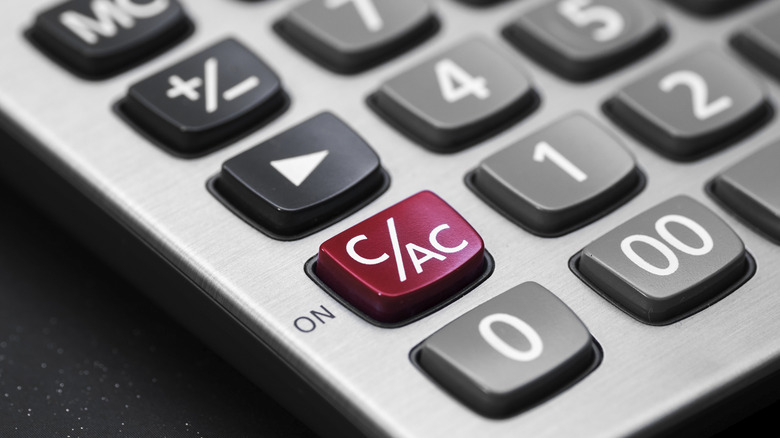What Does AC Stand For On A Calculator?
Life is full of tiny mysteries that could be easily solved were we to just look them up. What does that percentage chance of rain on weather reports actually mean? Well, the answer's there if we want to know. Likewise, we've all probably used a calculator at some point and simply accepted that the AC button clears whatever we have on the LCD so we can start again. Even the calculator on the iPhone features this standard button. But what does it actually stand for? "Cancel" or "Clear" would surely be part of it, but what is that "A" doing in there?
Well, like with our percentage chance of rain example and the question of what "E" represents on a calculator, this isn't some unexplainable mystery. Calculators have been around for a long time and it's well documented what "AC" actually stands for. But the confusion comes in due to the fact several buttons seem to perform the same function. C, CE, and AC all clear the calculator's display, so why do they all have different labels? Allow us to explain.
The meaning of the AC button on calculators
The AC button on a calculator stands for "All Clear." This button resets the calculator and any functions that have been used. CE, which appears on some calculator models but not all, is "Clear Entry," which rather than resetting the calculator entirely, simply removes the last thing you entered on the calculator. If you enter "2 + 3," for example, but want to remove the three, you would hit the CE button to clear the three and enter a new digit. C, meanwhile, typically performs the same function as AC, clearing the current calculation rather than the most recent entry. However, some models will have different combinations of these buttons. On some calculators, C is used instead of AC. Others will have AC and CE. For the most part, however, there will be one button to clear the device's memory entirely, and one button to clear the latest input.
These acronyms have been used pretty much since the advent of electronic calculators in the early 1960s. The Friden EC-130, for example, which is one of the earliest examples of the technology, was introduced in 1964 and included "Clear Entry" and "Clear All" keys. Those commands remained consistent in the following years, with 1971's Busicom LE-120A "HANDY" using C and CE. While it might not have been AC, C performed the same function, and things have remained the same ever since.

